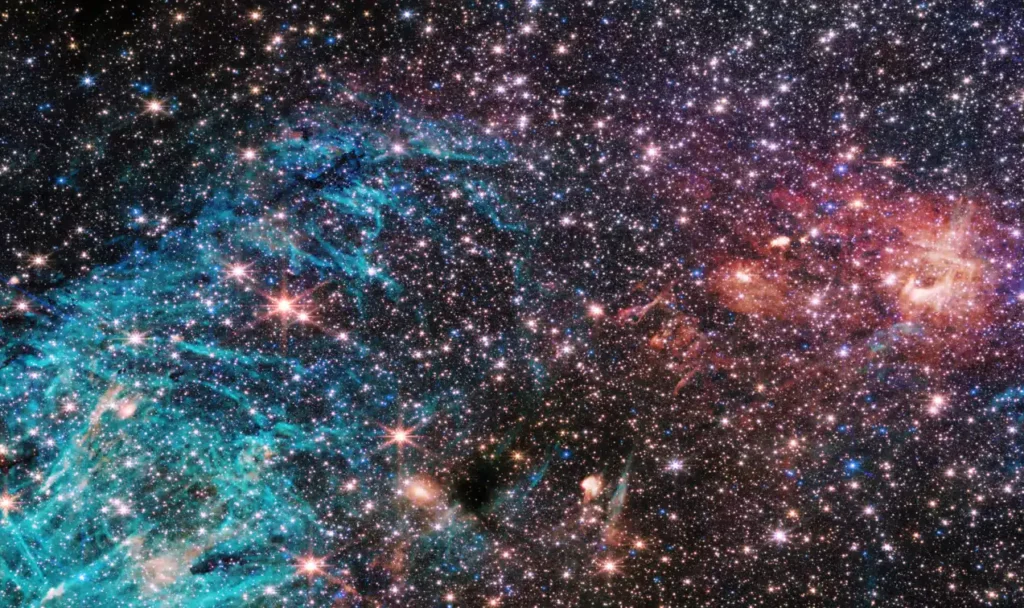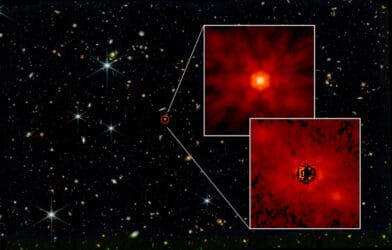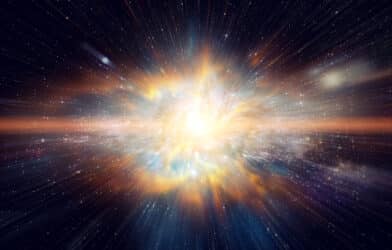In an awe-inspiring glimpse into the heart of our Milky Way galaxy, NASA’s James Webb Space Telescope (JWST) has unveiled a stunning image of the dense center of the galaxy. The image reveals intricate details and previously unseen features that have left astronomers both excited and puzzled.
The JWST captured a star-forming region known as Sagittarius C (Sgr C), located approximately 300 light-years away from the galaxy’s central supermassive black hole, Sagittarius A*.
Described as a “game-changer” in astronomical observations, the James Webb Space Telescope provides an unprecedented level of resolution and sensitivity in the infrared spectrum, allowing scientists to peer into this cosmic wonderland with unparalleled clarity.
“There’s never been any infrared data on this region with the level of resolution and sensitivity we get with Webb, so we are seeing lots of features here for the first time,” says Samuel Crowe, the observation team’s principal investigator and an undergraduate student at the University of Virginia, in a statement. “Webb reveals an incredible amount of detail, allowing us to study star formation in this sort of environment in a way that wasn’t possible previously.”
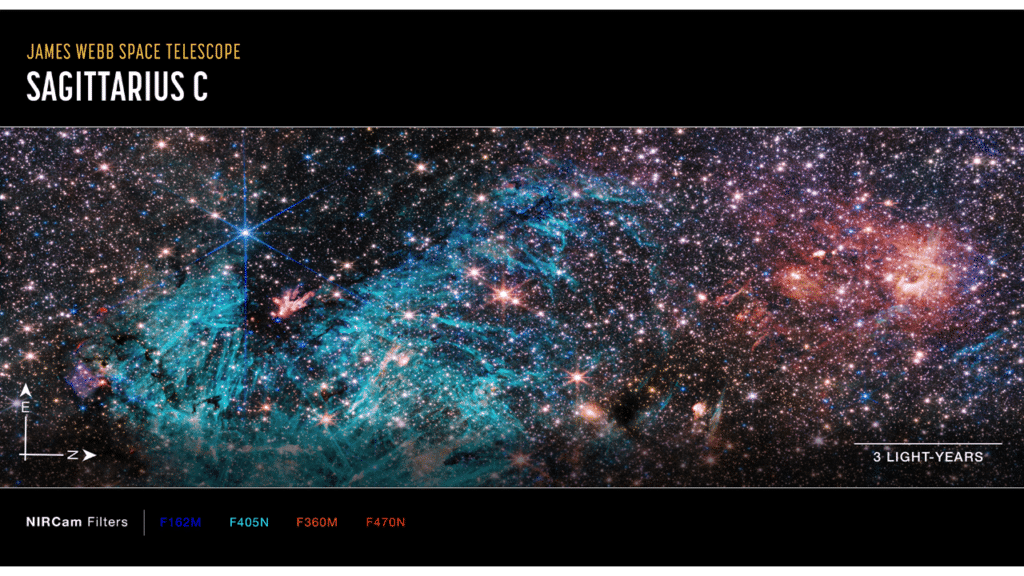
Professor Jonathan Tan, one of Crowe’s advisors at the University of Virginia, emphasizes the significance of studying the galactic center. “The galactic center is the most extreme environment in our Milky Way galaxy, where current theories of star formation can be put to their most rigorous test,” notes Tan.
One of the most striking discoveries in the JWST image is a cluster of protostars, which are stars in the process of formation and growth. These protostars emit outflows that glow brightly in the midst of an infrared-dark cloud, resembling a bonfire in the cosmic darkness.
At the core of this young cluster lies a massive protostar, more than 30 times the mass of our Sun, which had been previously identified. What makes this region even more fascinating is the extreme density of the surrounding cloud, so thick that the light from stars located behind it cannot reach the Webb telescope. This optical illusion makes it appear less crowded than it truly is, making it one of the most densely populated areas in the image. Smaller infrared-dark clouds are also scattered throughout the region, appearing as dark patches amidst the sea of stars, marking locations where future stars are currently taking shape.
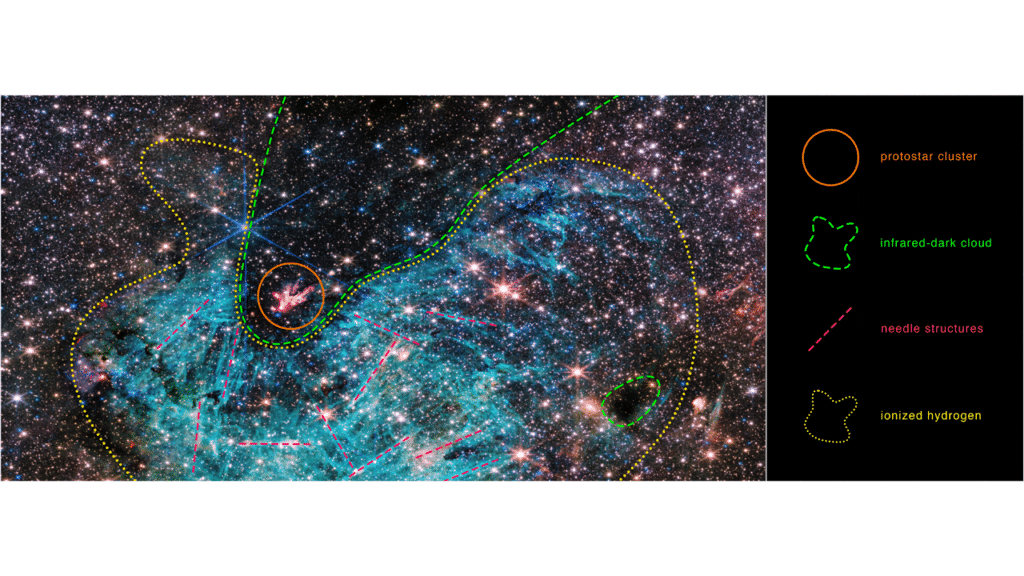
JWST’s Near-Infrared Camera (NIRCam) instrument also captured large-scale emission from ionized hydrogen, displayed in cyan in the image. Typically, such emissions result from energetic photons emitted by young massive stars. However, the sheer extent of the ionized hydrogen region shown by JWST has surprised scientists, prompting further investigation. Crowe plans to delve deeper into the needle-like structures within the ionized hydrogen, which appear to be oriented in chaotic directions.
“The galactic center is a crowded, tumultuous place. There are turbulent, magnetized gas clouds that are forming stars, which then impact the surrounding gas with their outflowing winds, jets, and radiation,” says Rubén Fedriani, a co-investigator of the project at the Instituto Astrofísica de Andalucía in Spain. “Webb has provided us with a ton of data on this extreme environment, and we are just starting to dig into it.”
Situated approximately 25,000 light-years from Earth, the galactic center’s proximity to Webb’s lens allows astronomers to study individual stars with unmatched precision. This proximity offers a unique opportunity to gather groundbreaking insights into the star formation process and how it may vary depending on the cosmic environment, particularly when compared to other regions of the Milky Way. For instance, scientists aim to determine whether more massive stars are formed in the galaxy’s central region compared to its spiral arms’ periphery.
“The image from Webb is stunning, and the science we will get from it is even better,” explains Crowe. “Massive stars are factories that produce heavy elements in their nuclear cores, so understanding them better is like learning the origin story of much of the universe.”
The James Webb Space Telescope, often hailed as the world’s premier space science observatory, is a collaborative international effort led by NASA, in partnership with the European Space Agency (ESA) and the Canadian Space Agency. Webb’s mission is to solve mysteries within our solar system, explore distant exoplanets, and delve into the enigmatic structures and origins of our universe, shedding light on our place within it.
